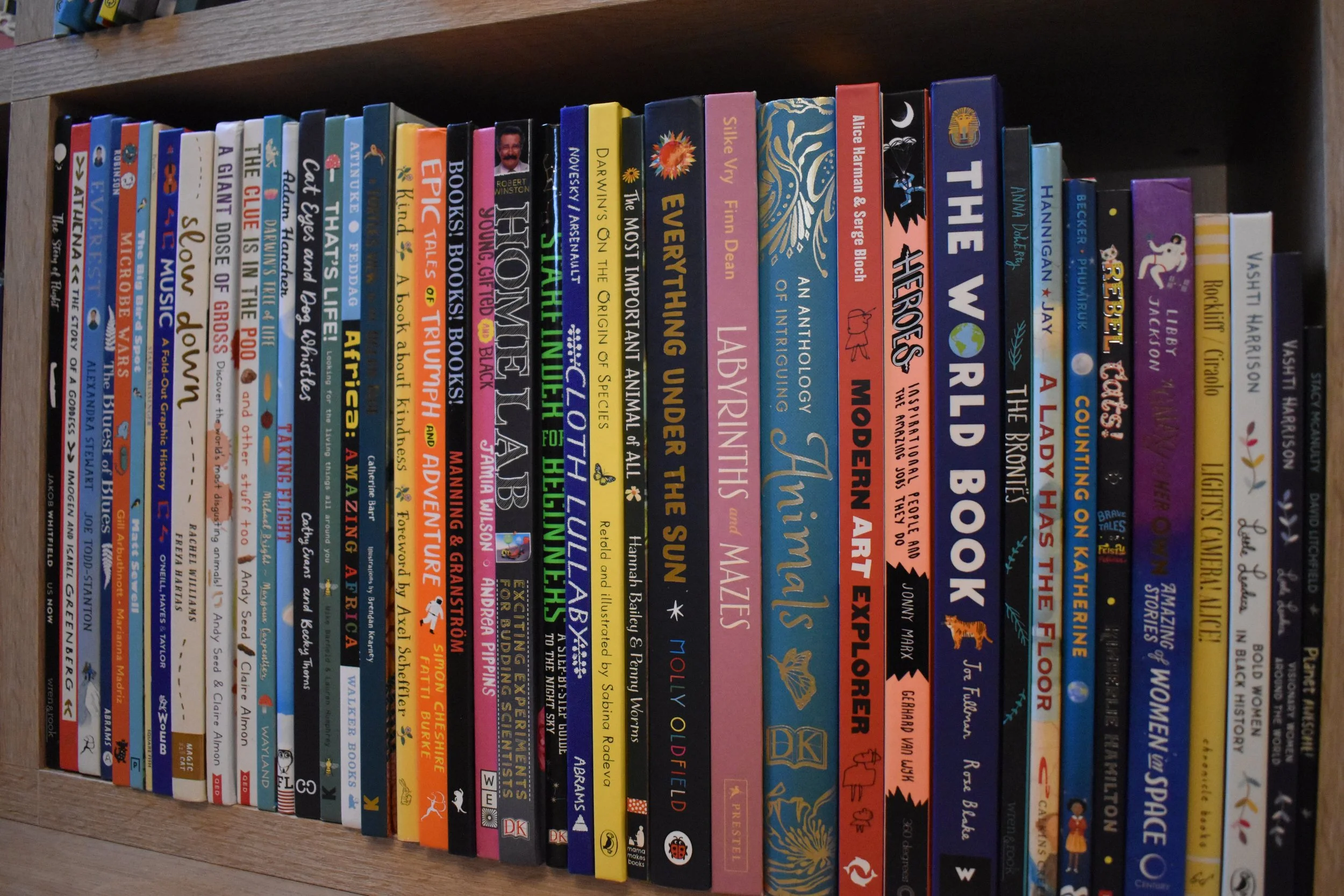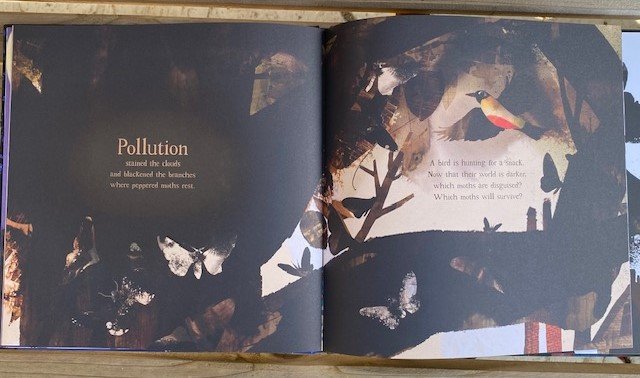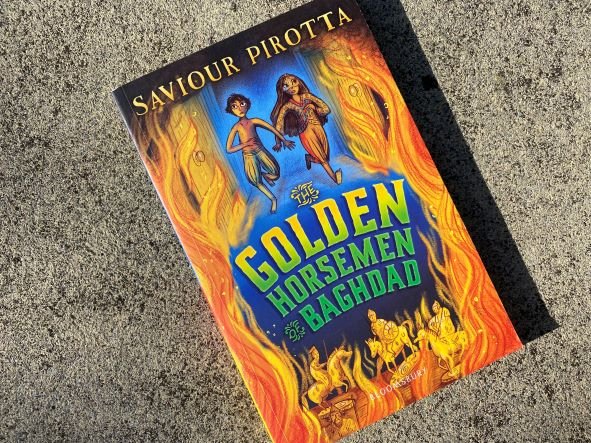
Reviews from Another Life
I have been reviewing books for many years. Here you can search for reviews of other titles by the authors, illustrators, poets and publishers featured on my ‘Reviews’ blog.
Rosie Raja: Churchill’s Spy
Half-Indian, half-English, Rosina has had to move to England where she is miserable. Her father took her from India when her mother died and she misses the palace she lived in and her aunt, Rani-K, the queen of their kingdom. Things take a dramatic turn when Rosie learns that her father is a spy for the British government and she stows away on a plane to be with him. Finding herself in Nazi occupied France, Rosie needs to be on her guard if she is to help her father with his mission- and survive.
Courageous and loyal, Rosie is an excellent heroine. Left reeling by her mother’s death and angry and confused by her father’s apparent lack of grief and concern for her wishes, Rosie is determined to find out what he is doing, launching herself into the heart of danger. Smart and capable, she is keen to learn the ‘skills’ of spying and quick to take action when needed.
The story does not shy away from some of the harsh realities of life in occupied France, exploring the role of the resistance and the risks they faced in opposing the Nazis. There is tragedy within the unit Rosie’s father is leading and tough decisions have to be made, considering ‘the greater good’.
Rosie’s mixed heritage of her Indian mother and English father also introduces the role of the British Raj in India, the struggle for independence and Gandhi’s non-violent teachings, sure to encourage readers to further investigate this part of history. I wonder whether the final version of the book might include some suggested reading material as there is so much to learn from (as well as enjoy in) this story. I believe this is the first in a series of adventures for Rosie and I look forward to seeing what she gets up to next!
Rosie Raja: Churchill’s Spy
Sufiya Ahmed
Bloomsbury ISBN: 978-1801990059
Moth: An Evolution Story
The peppered moth story is a famous example of natural selection and this beautiful book vividly brings it to life. Until the early 1800s, most of these moths were light with peppered wings, with a very rare dark variety. The moths’ wings help them to lie camouflaged on lichen-covered branches; however, with the advent of the Industrial Revolution and its pollution, the reverse became true. The darker variety became dominant as through natural selection, the darker moths were better adapted to their environment. As laws to reduce air pollution have been passed, the lichens have grown back and the light moths have returned and now both varieties can be seen.
This book is a real gift to the Y6 teacher when teaching the Science P of S strand : to identify how animals and plants are adapted to suit their environment in different ways and that adaptation may lead to evolution. The story of the moth is told clearly, effortlessly explaining the ‘science bit’ and encouraging the reader to go and look for these wonderful creatures. A message of hope - hope for survival, hope for adaptation and hope for change. More detailed notes are included at the end, including the Latin name (Linnaeus’s binomial system!).
In addition to the fascinating text the book is lavishly illustrated with stunning illustrations. From the stunning moth emerging from its cocoon to the dangers of predators to the menacing pollution to the cleaner skies, each spread is just gorgeous.
‘Moth’ is both fascinating and beautiful- and an excellent resource for school! The perfect mix of art and science, it’s a real must have!
Moth: An Evolution Story Isabel Thomas, illustrated by Daniel Egneus
Bloomsbury ISBN: 978-1408889756
The Golden Horsemen of Baghdad
When his father, a fisherman, dies, Jabir is left in charge of his mother and his three sisters. When their landlord threatens to evict them, Jabir must find work so he heads for Baghdad, the most fascinating city in the world.
However, Jabir is thrown into prison for stealing food and things look desperate for him. Fortunately, Jabir’s talent for whittling toys means he is rescued by a clockmaker who needs him to carve twelve golden horsemen to decorate a water clock for Caliph Harun Al-Raschid. But someone seems determined to prevent Jabir from completing his task and he and Yasmina, daughter of the clock maker, have to seek help from his mother’s people who live in the desert. Will the clock be finished in time?
Not only is this an amazing adventure story with a pacey plot and excellent characters, but it is perfect for supporting the History curriculum at KS2-’a non-European society that provides contrasts with British history… early Islamic civilization, including a study of Baghdad c. AD 900’. The book is richly detailed and offers much information about Baghdad and life at this time as the fabric of the story, making in invaluable for those choosing to teach this period. The quality of writing, its historical setting and the compelling nature of the story make it an excellent text for using as a focus both both history and English, bringing the period alive and offering many opportunities for drama, writing in a range of genres and contexts, exploring vocabulary and offering a challenging read. It’s length also makes it a very achievable read. This is the type of book that makes me itch to start planning! Fabulous!
The Golden Horsemen of Baghdad Saviour Pirotta
Bloomsbury ISBN: 978-1472955999
Mark of the Cyclops
Set in Ancient Greece, 'Mark of the Cyclops' follows the adventures of Nico and Thrax. A freeborn apprentice, Nico is a scribe who works for Master Lykos and when new slave, Thrax, joins the household, the two are sent with his son, Ariston, a poet, to a very important wedding in Corinth. On this trip, the boys show a flair for detecting when a precious wedding vase is broken and a slave girl. Gaia, is blamed. A mysterious stranger with the mark of the Cyclops on his face keeps appearing- is he involved in the mystery somehow?
Books like this are a real gift to teachers. The historical content is not incidental, but woven seamlessly into the fabric of the story, making it rich in detail about the period. Most things are explained naturally within the context of the writing, for example...
We found the agora teeming with people, like a anthill at the height of summer. There were stalls laden with fish, still gasping from being pulled out of the sea... We spied cheap jewellery and blue amulets shaped like eyes to ward off sickness and bad luck. I found the stall selling papyrus and stopped to admire it. It had lots of other wonderful things for sale too. Reed pens and styluses and inkwells in various shapes and sizes, some of them with cork stoppers to stop the ink drying up.
"Look at these little knives," said Thrax. "They have beautiful bone handles."
"They're sharpening knives. Scribes use them on their kalamos."
A glossary, a section explaining the many and varied pots used at this time and information about Greek Gods and Goddesses are included at the end of the book to ensure nothing is missed. Vividly described scenes and the use of correct terms really help to immerse the reader in the world of the Ancient Greeks.
But this is not 'just' a historical novel. It is also a very convincing detective story with plenty of twists and turns to keep the reader completely engrossed in the action. The classic Poirot and Hastings, Holmes and Watson combination of detective and sidekick who records their brave deeds is cleverly developed with Thrax, a slave boy with a knack for problem solving and observation, teaming up with Nico, a scribe who dreams of writing his own stories.
There is so much work that could stem from this fabulous story- meaningfully linked to Ancient Greece if that happens to be the class topic- or as a novel in its own right. Discussions about slavery and its role in Ancient civilisations could be linked to reading books like 'Kick' (one of our Moving On titles) which raises the topic of modern slavery. With 'individual liberty' being one of the core British values, this could easily form part of their SMSC work.
The book offers numerous opportunities to develop oracy skills as well as reading and writing opportunities.The historical and geographical links are obvious, but there are also science links which could be made, particularly around changes of state. Saviour Pirotta is the author of many other books, including some of my favourite re-tellings of myths and legends from many countries which having read this, children are sure enjoy exploring for themselves.
The book is full of atmospheric, black and white illustrations which, as well as adding to the story, could be used as a starting point for work. They are full of details from the story, well worth lingering over!
A thoroughly enjoyable story which thankfully is part of a series so the further adventures of Nico and Thrax can be enjoyed as they solve further mysteries in the Ancient Greek world.
Mark of the Cyclops: An Ancient Greek Mystery Saviour Pirotta
Bloomsbury ISBN: 978-1472934147





